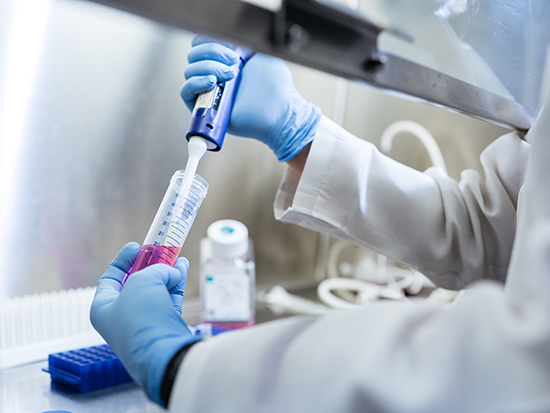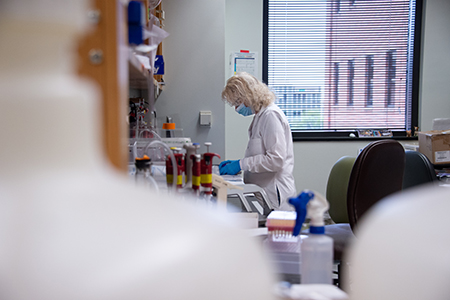 Research funding to UAB from the National Institutes of Health tops $300 million again. (Photography: Andrea Mabry)Research funding to the University of Alabama at Birmingham from the National Institutes of Health exceeded $325 million in 2020. The university received $325,573,502, according to the Blue Ridge Institute for Medical Research. That placed UAB 27th in the list of universities receiving funding from the NIH. Among public universities, UAB ranked 12th.
Research funding to UAB from the National Institutes of Health tops $300 million again. (Photography: Andrea Mabry)Research funding to the University of Alabama at Birmingham from the National Institutes of Health exceeded $325 million in 2020. The university received $325,573,502, according to the Blue Ridge Institute for Medical Research. That placed UAB 27th in the list of universities receiving funding from the NIH. Among public universities, UAB ranked 12th.
The largest amount of funding, $269,911,974, went to investigators in the School of Medicine. This was an increase of more than $13 million over 2019, good for 24th overall among the nation’s medical schools.
The School of Optometry ranked third among optometry schools, with funding of more than $3.4 million.
The School of Health Professions ranked sixth among allied health schools, with $9.7 million.
The School of Dentistry ranked 10th, one place higher than 2019, with a total of more than $7 million in grants, exceeding their 2019 total of $5.9 million.
The School of Nursing ranked 11th, up four spots from last year, with an increase of $1 million in funding bringing their 2020 total to $5.9 million.
The School of Public Health saw an increase of more than $3.5 million in research funding, moving them up four spots in the rankings to 15th with $18 million.
“This is the second year in a row that UAB research funding from NIH has been over $300 million, reaffirming UAB’s place as a leading academic research institution,” said Chris Brown, Ph.D., vice president for Research at UAB. “In addition to serving as a major economic driver for Birmingham and Alabama, this research funding leads to discoveries from our laboratories that are responsible for dramatic improvements in the health and well-being of citizens of Alabama, the United States and the world.”
Within the School of Medicine, five departments were in the top 10 in research funding. The Department of Dermatology was second, with more than $8.2 million. The Department of Cell, Developmental and Integrative Biology was sixth, with nearly $17 million. The Department of Biomedical Engineering landed in seventh place, with $4.7 million, while the Department of
 Microbiology ranked eighth, with $21.3 million. The Department of Obstetrics and Gynecology ranked 10th, with $6.4 million.
Microbiology ranked eighth, with $21.3 million. The Department of Obstetrics and Gynecology ranked 10th, with $6.4 million.
Another seven departments landed in the top 20 in the nation. Ophthalmology and Visual Sciences brought in $8.3 million, good for 12th in the rankings. The Department of Pediatrics, with $21.5 million, was 14th in the nation, as was the Department of Urology, with $1.7 million. The Department of Neurology had $18.6 million in funding, good for 16th place, while the Department of Anesthesiology came in at 19th in the nation, with $4.6 million in funding. Two departments ranked 20th on their respective lists: Neurosurgery, with $2.6 million, and Physical Medicine and Rehabilitation, with over half a million.
Three departments just missed the top 20, finishing at 21st in their respective fields. The Department of Internal Medicine, with $98.7 million; the Department of Genetics, with $10.9 million; and the Department of Surgery, with $7 million. The Department of Pathology, 23rd, had grants totaling $10.9 million; the Department of Neurobiology, 28th, had $7.4 million; while the Department of Radiation Oncology/Department of Radiology, 30th, had $5.9 million.
The Departments of Psychiatry and Behavioral Neurobiology, Otolaryngology, and Biochemistry and Molecular Genetics all ranked within the top 50 in their fields.